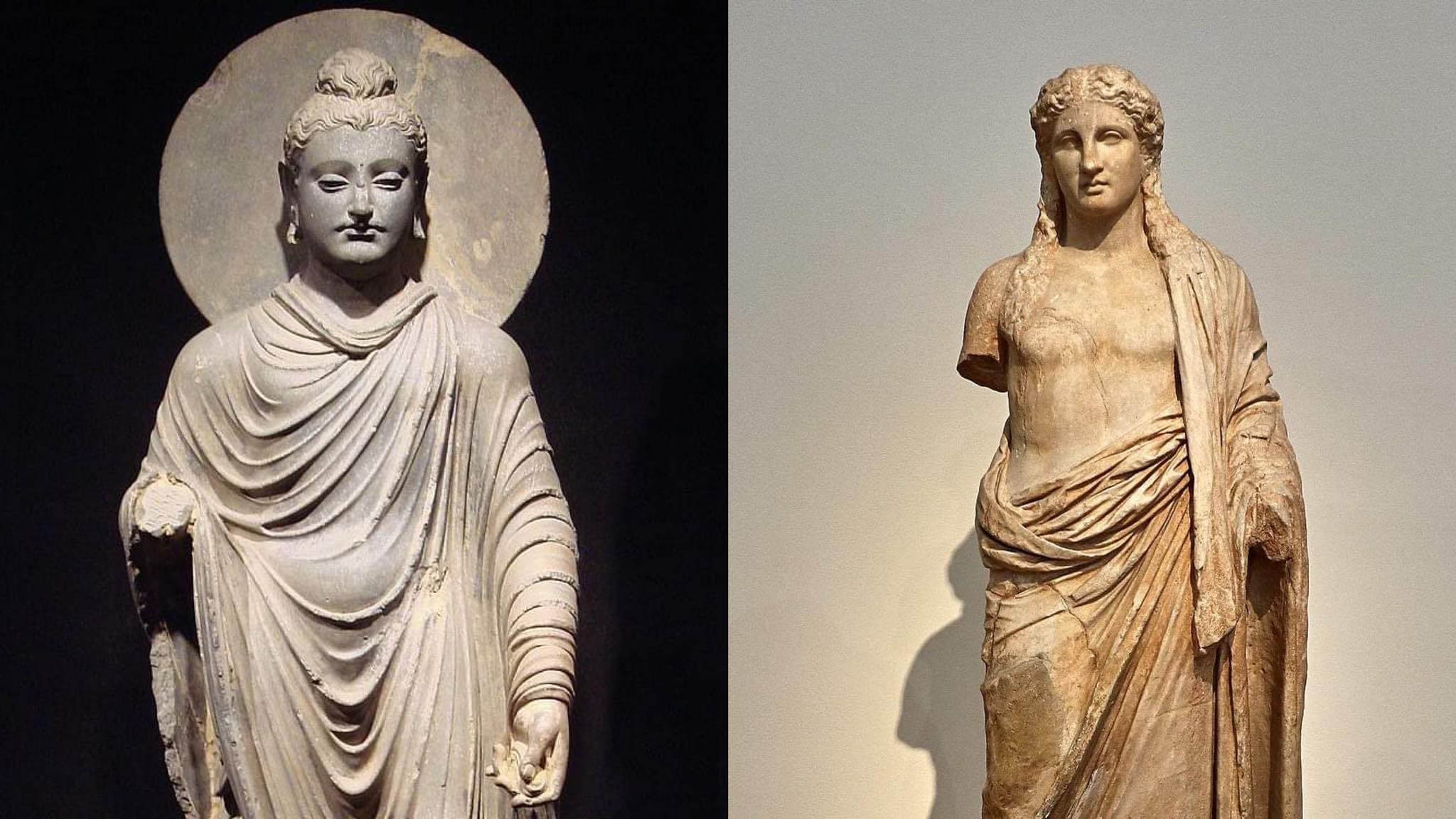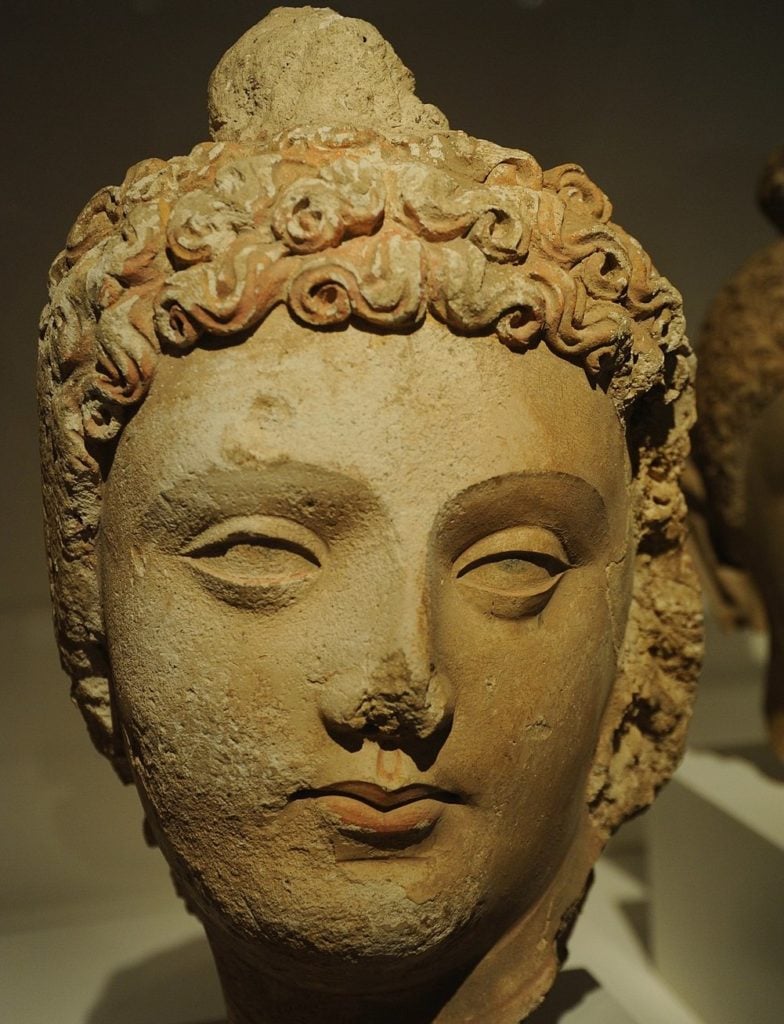
Although Ancient Greece and Buddhism seem to be completely unrelated, Ancient Greek thought and aesthetics actually had a major influence on the Eastern religion by which, in turn, Greek philosophy was also impacted.
Buddhism originated in ancient India at some point between the fifth and fourth centuries BC. The religion is based on the teachings and life of Gautama Buddha, and it spread throughout much of Asia during antiquity.
Due to political bonds between Greece and India, forged most strongly after Alexander the Great’s invasion of the Indus Valley in 357 BC, Greek thought and Buddhism had many opportunities to interact.
These links led to the development of a cultural and religious blend of Greek and Buddhist elements in what is now Afghanistan and Pakistan between the fifth and fourth century BC.
Scholars refer to this mixture of Greek thought, aesthetics, and Buddhism as Greco-Buddhism.
While Alexander’s travels into Asia established many strong connections between the Greeks and those living in the region, the links between the areas went back even further to Darius the Great.
The Achaemenid, or Persian Empire under the rule of Darius the Great extended its territory substantially during the fifth century BC. Its lands reached from Anatolia, which was home to many Greeks, all the way to India.
The outer reaches of the empire were quite close to Greece, thus allowing Greeks to encounter people and thought from West Asia.
Additionally, Darius was known to send Greeks living in Anatolia deep into his domain and even as far as Afghanistan and India if they rebelled against his rule.
Links between Ancient Greece and Asia
That is why, when Alexander the Great traveled to these far off lands over a century later, he encountered many people of Greek descent. He founded numerous Greek cities across Central and West Asia.
After the death of Alexander the Great, his massive empire was split, and Seleucus I Nicator, a general in Alexander the Great’s army, took the Mesopotamian region of Babylonia in 321 BC.
The general then founded Antioch and expanded his dominions to include much of the Near Eastern territories that belonged to the former Macedonian Empire.
The Seleucid Empire took over more territories including Anatolia, Persia, the Levant, Mesopotamia, and today’s Kuwait, Afghanistan, and parts of Turkmenistan.
When the empire attempted to expand into India, it faced conflicts with Chandragupta, the ruler of the Maurya Empire, that led to the cession of vast territory west of the Indus River.
Although controlled by the Mauryan Empire, the regions formerly under Alexander’s or Seleucus’s power maintained strong connections to Greek thought and aesthetics.
Chandragupta’s grandson, Ashoka, converted to Buddhism while ruling over the Mauryan Empire. He spread his religion throughout the empire, resulting in a unique mix of Greek and Buddhist thought.
Perhaps unsurprisingly, it was in the Maura Empire under Ashoka when the first statues of Buddha were created, likely due to the fact that statuary was extremely important in Greece.
Greco-Buddhism: Ancient Greece and Asia
Even after the empire fell in 185 BC, Greco-Buddhism thrived, and two important societies were developing, the Greco-Bactrian Kingdom and the Indo-Greek Kingdom.
The Greco-Bactrian kingdom (256 – 100 BC) was a Hellenistic society that encompassed much of Western Asia, including Afghanistan, Uzbekistan, Tajikistan, Turkmenistan, and parts of Iran and Pakistan at its height.
Upon the fall of the Greco-Bactrian Kingdom, a series of successor states, loosely labeled the Indo-Greek Kingdom, began to thrive. The Indo-Greek Kingdom is noted for its prominently Hellenistic language, culture, coins, and aesthetics.
It was during the height of the Indo-Greek Kingdom, which ran from 200 BC to 10 AD, that Greco-Buddhist thought and style became well-developed.
Due to strong links between ancient Greece and the East, countless ancient Greek philosophers were able to make their way to India. This interaction between ancient Greek philosophy and Indian thought had a significant impact on both societies.
Philosophers such as Pyrrho, Anaxarchus, and Onesicritus all traveled with Alexander the great to the eastern stretches of his domain.
While in India, the Ancient Greeks encountered Indian ascetics, or hermits, who lived a restrictive lifestyle.
Pyrrho, upon returning to Greece, formed the philosophical school of Pyrrhonism, which is focused on doubt and skepticism. Many scholars believe that Pyrrho was inspired by the Indian ascetics he encountered on his travelers when developing his philosophical beliefs.
The ancient Greek philosopher also explicitly mentions Buddhism in his works and even interpreted the three marks of existence, an essential tenet of Buddhism.
Hegesias of Cyrene, a Greek city in modern-day Libya, believed that true happiness in life is impossible to achieve and that human beings should be focused on the avoidance of suffering and pain rather than the search for pleasure.
His philosophies were strongly influenced by Buddhist missionaries, sent by Mauryan ruler Ashoka, throughout Western Asia and the Middle East.
Perhaps the most visible and notable example of ancient Greek influence on Buddhism comes in the form of Buddhist statuary. As previously noted, the first statues of the Buddha were constructed in Hellenized regions, where people were drawn to the art due to Greece’s strong links to sculpture.
Before the first sculpture of the figure of Buddha was created, he was only represented in art in the form of symbols rather than as a male human.
Gandharan artworks, or those created in a Hellenistic style in northwest India, Pakistan, and Afghanistan during the Hellenistic period, are striking and feature Buddhist and Eastern elements although inspired by Greek and Western styles.

Depictions of the Buddha in the Gandhara style resemble a Greek god. He is often depicted wearing a distinctive, draped ancient Greek himation, or cloak, and is shown standing in the contrapposto stance typical of ancient Greek sculptures.
Many depictions of the Buddha also feature a curly hairstyle that is believed to have been inspired by ancient Greek art.
Greco-Buddhism and Hellenized artwork remained strong throughout late antiquity and thrived until the resurgence of Hinduism in India and the Muslim conquest of Central Asia in the 7th and 8th centuries.